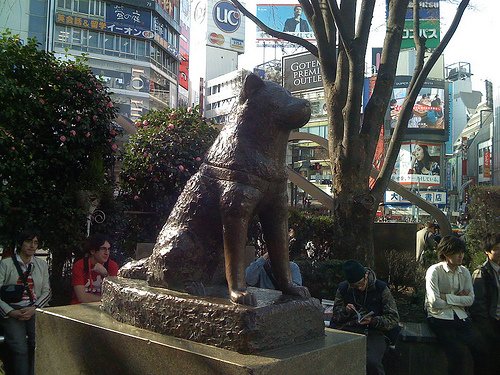The history of Buddhism in Japan is long, going back to the very beginning of the country’s historical age, since Buddhism and kanji were imported together and are inseparable from Japanese culture. The religion was introduced to Japan either in 467 A.D. from China, according to a Chinese account, or 552 A.D. through Korea, according to the Nihon Shoki, one of the oldest historical documents from inside Japan. While one might think that Japan would have a feeling of brotherhood with other Buddhist countries such as Thailand or Tibet, in reality the local flavor of Buddhism is so different that I don’t think there’s much of a connection. There’s a special time of year in the spring and fall called Ohigan (oh-he-gahn), literally “the other shore,” a time for people to visit their parents’ homes for a good dinner, then light a stick of incense in memory of family members who have died (who have gone to the other shore). Last night my father-in-law visited his relatives and took my daughter with him, since she wanted to visit the grave of her grandfather’s side of the family. My daughter has a reputation in our family for being very spiritual, and she caused a stir when she told everyone that she could see a flowing white figure standing near the Buddhist altar. Maybe she had reached out to the other shore?















